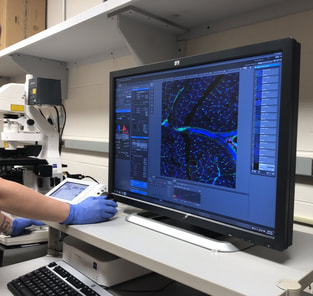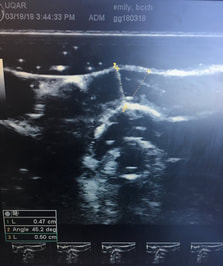1. Wildlife health and emerging viral zoonoses
Energetic constraints and viral serology
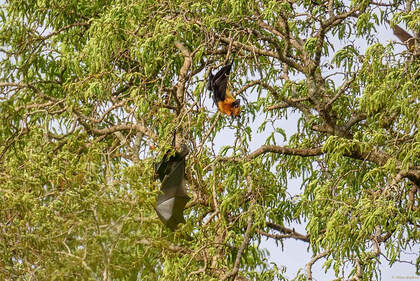 (c) Allan Hopkins
(c) Allan Hopkins
Nutrition, life-stage, and the ability of the immune system to respond adequately to pathogen presence are tightly interconnected. Inadequate energetic resources or reproductive hormones can dampen cell-mediated immunity and T-cell responses. Additionally, as mounting an immune response is energetically intensive, the decrease in energetic reserves could lead to shifts in immunity that are less energetically demanding (e.g. antibody response). Insufficient immune response or strategic shifts in the energy allocated to differing branches of the immune response likely has consequences for a host’s ability to tolerate or resist pathogens and the dynamics of viral transmission. For bats in particular, the current literature indicates that several zoonoses manifest as persistent viral infections, with viral shedding modulated seasonally by immunity, reproduction, and resource constraints. This leads to the question, how does the availability of nutritional resources and the reproductive phase affect seasonal investment in immune defense and, consequently, viral shedding into the surrounding environment? My research specifically aims to understand the temporal trends in (1) nutritional status, immune function, and viral dynamics in bat reservoirs for emerging zoonotic diseases and (2) utilizing biomedical technology and informatics to expose past viral history in humans and bats as a surveillance effort.
See Cornelius Ruhs et al. in submission.
See Cornelius Ruhs et al. in submission.
Wildlife hematology
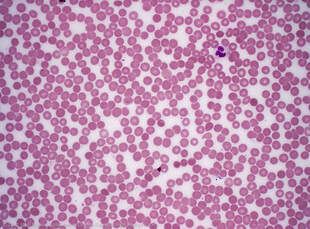
This is a wide-reaching, collaborative initiative with researchers from four different universities. Our goal was to conduct a comprehensive literature search and collate all data published on wildlife leukocytes and parasite burdens into one freely-available database. We hope this database provides a jumping off point for more comparative studies and also as a reference tool to compare your data against other published values.
Currently this database is comprised of birds (Aves) and bats (Chiroptera), but we plan to expand in the future. Our next efforts will focus on mammals, herps, and reptiles.
www.hemascope.org
Currently this database is comprised of birds (Aves) and bats (Chiroptera), but we plan to expand in the future. Our next efforts will focus on mammals, herps, and reptiles.
www.hemascope.org
2. Energetic constraints on immune function and physiology
Body size
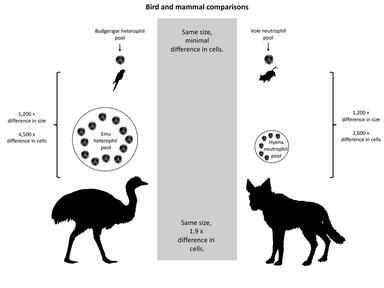
Body size impacts almost all aspects of an organism's function, behavior and role in their ecosystem. Many of the physiological factors that go hand-in-hand with body size evolution, like lifespan and increased movement distance, also likely impact exposure risk to parasites and pathogens yet we know little about how body mass impacts defense. We've discovered that heterophils, specifically, in birds scale hypermetrically (>0) and much more so than neutrophils in mammals. If we scale up to whole-organism values, this would mean that an ostrich circulates 2.2x more neutrophils than a panda, which weighs approximately the same size. Potential explanations include the evolution of flight, increasing risk space for birds, or lack of differentiated lymph nodes. See Cornelius Ruhs et al. 2020 and Cornelius Ruhs and Becker et al. 2021.
Food unpredictability
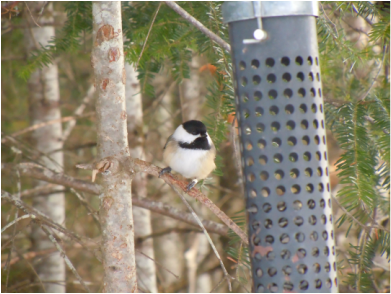
Black-capped chickadees are temperate, resident birds that spend their entire annual cycle in one location. That means that these birds must endure harsh winter conditions, like extreme cold and potentially lack of adequate resources. My previous research examined the annual cycle of black-capped chickadees that live in Rimouski, Canada (3 hours northeast of Québec). Specifically, I was interested in how these birds modulate their immune system to cope with the extreme flexibility in weather and forest conditions. I was also interested in whether or not the use of supplemental feeders and food unpredictability impacts the immune function, metabolic rate and condition of these birds. While most of my project is rooted in ecoimmunology, I utilized techniques to measure daily energy expenditure (energy budget) and how that influenced the immune dynamics of these birds. See Cornelius et al. 2017, Cornelius Ruhs et al. 2018 and Cornelius Ruhs et al. 2019.
3. Physiological responses to acute environmental change
Acute and chronic effects of pesticides on immunity

Together in collaboration with Dr. Gavin Dehnert at the University of Wisconsin-Madison Sea Grant, we are exploring how acute and chronic exposure to legacy and emerging contaminants impacts innate immune function in economically and culturally important species for the tribal communities in the Great Lakes region.
As a first step, we are interested in how acute (6hr-24hr) and chronic (+25days) exposure to a gradient of ecologically-relevant concentrations impacts fathead minnow (Pimephales promelas) innate immune function, fever behavior, and wound healing abilities. See Anton et al. 2023.
We also have an on-going project with Sean Strom at the Wisconsin DNR to understand how heavy metal and PFAS contamination impacts bald eagle nestling immune function, parasite burden, and immune gene expression. After the first field season we are already seeing that heavy contamination reduces generalized antibody-related immune function. Results are still being analyzed, but future efforts will explore gene expression to bacterial, fungal, and viral challenges ex vivo.
As a first step, we are interested in how acute (6hr-24hr) and chronic (+25days) exposure to a gradient of ecologically-relevant concentrations impacts fathead minnow (Pimephales promelas) innate immune function, fever behavior, and wound healing abilities. See Anton et al. 2023.
We also have an on-going project with Sean Strom at the Wisconsin DNR to understand how heavy metal and PFAS contamination impacts bald eagle nestling immune function, parasite burden, and immune gene expression. After the first field season we are already seeing that heavy contamination reduces generalized antibody-related immune function. Results are still being analyzed, but future efforts will explore gene expression to bacterial, fungal, and viral challenges ex vivo.
